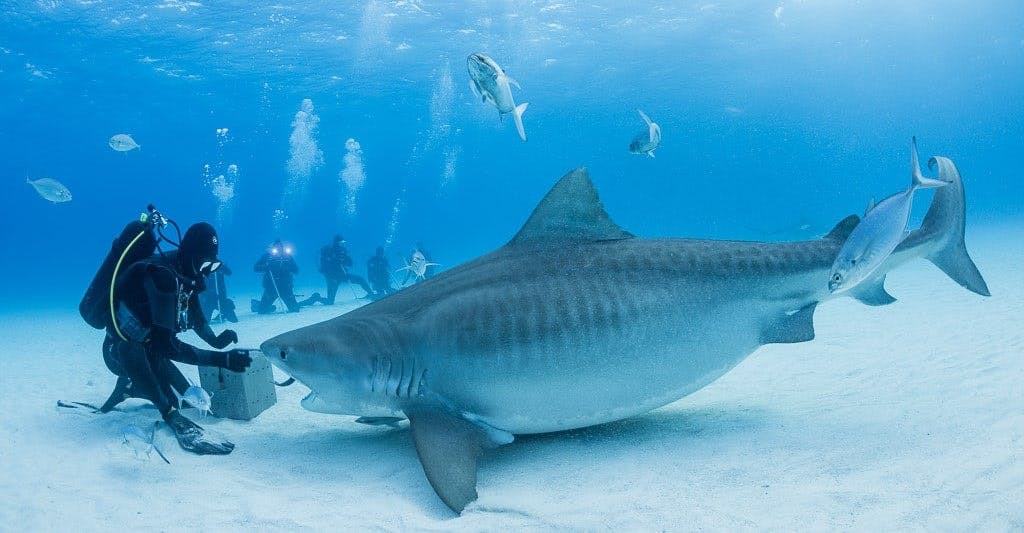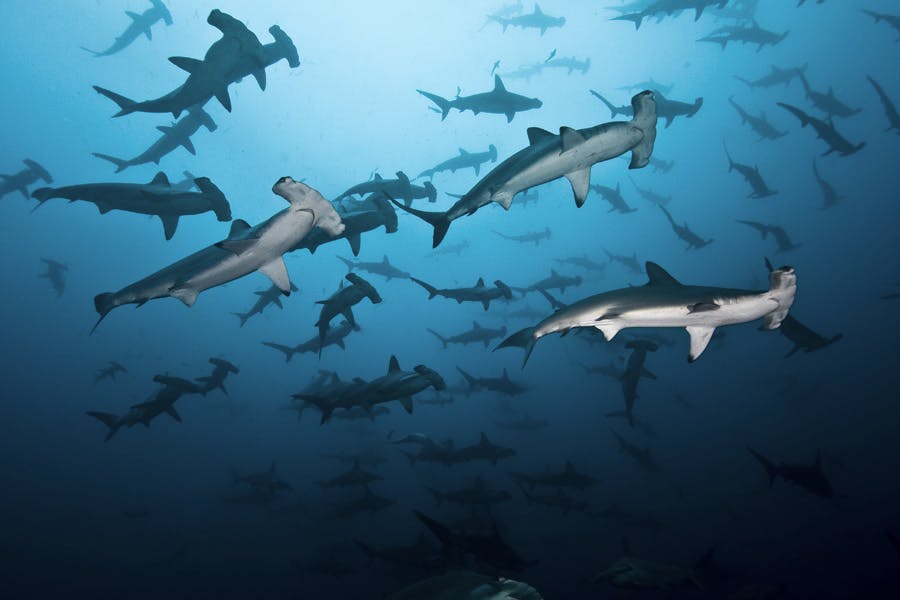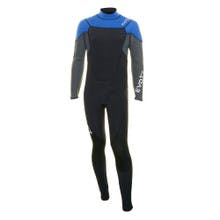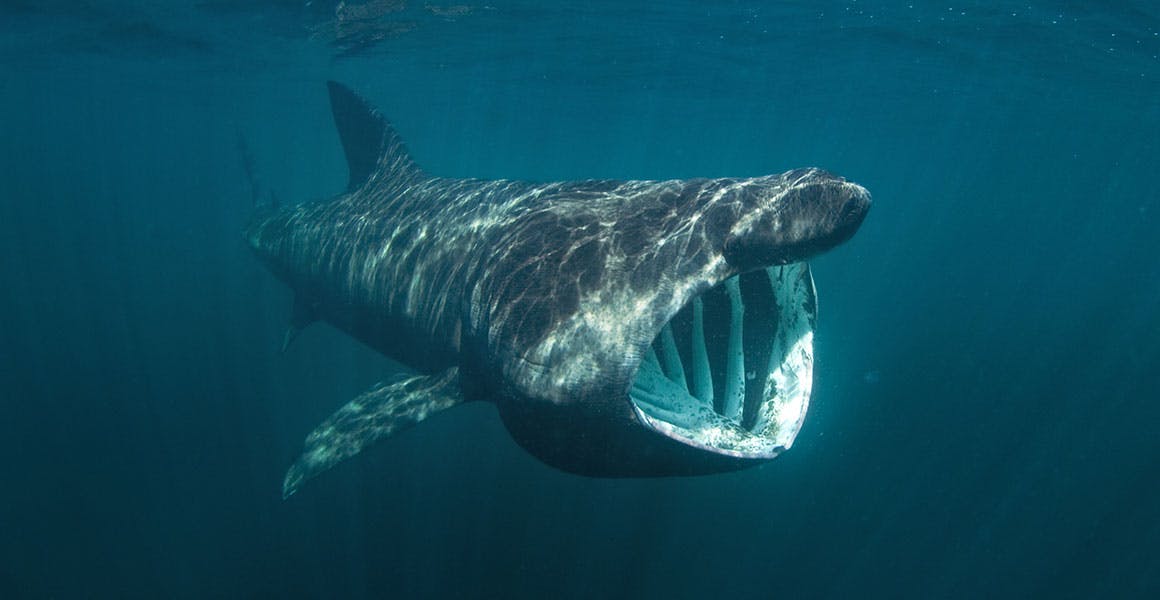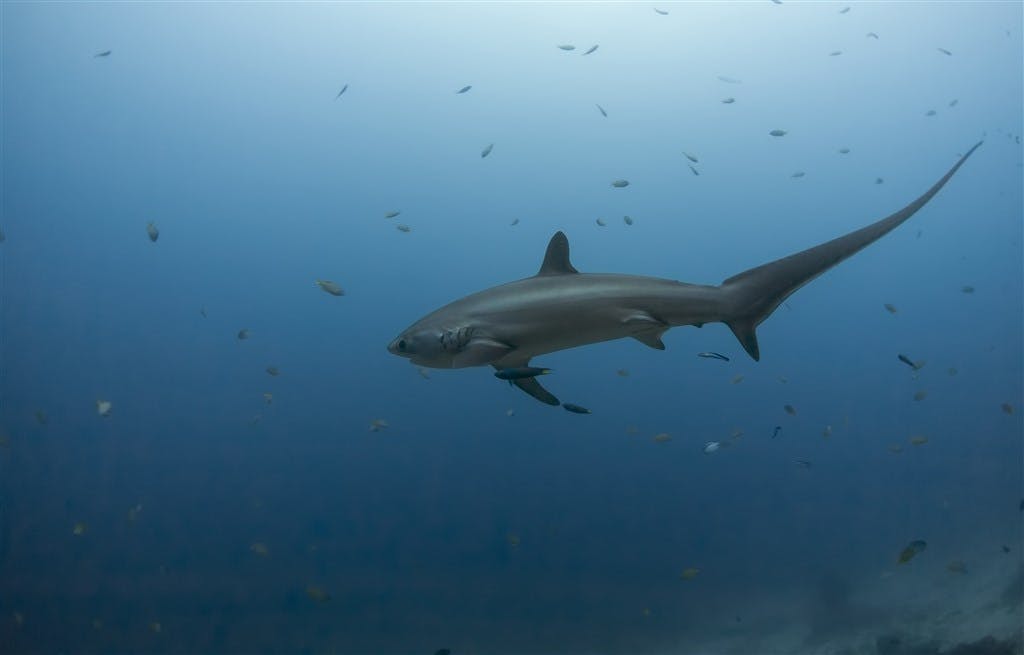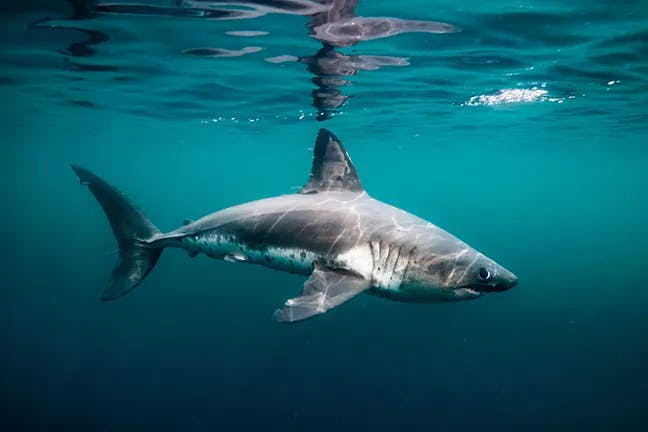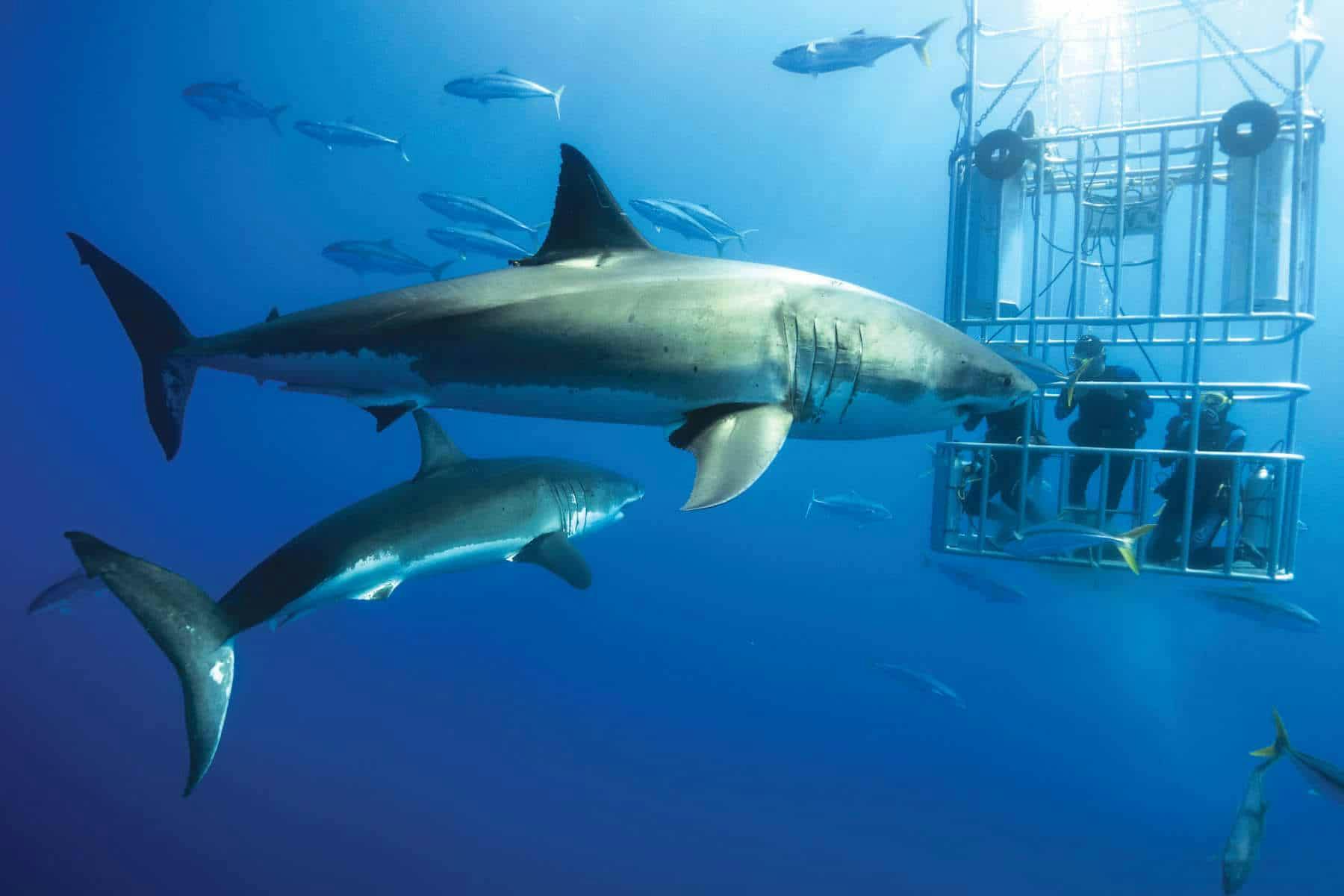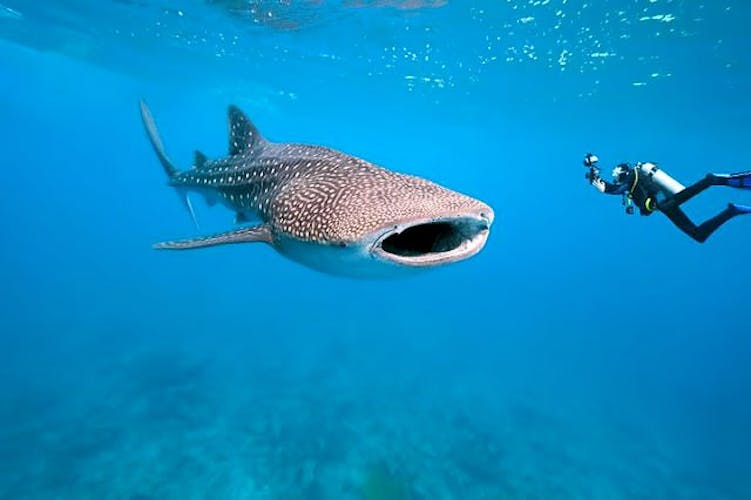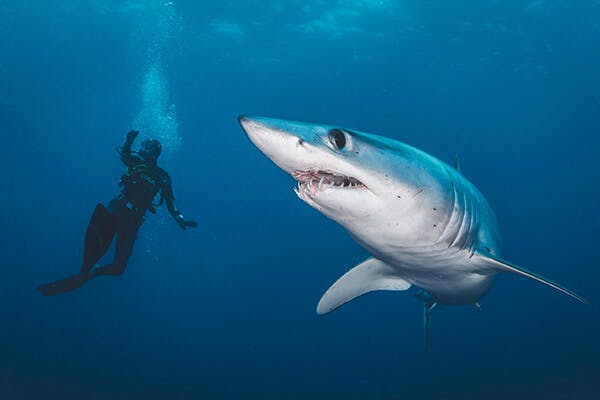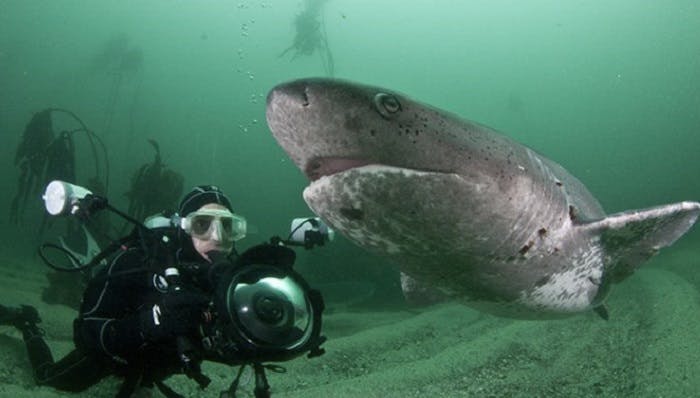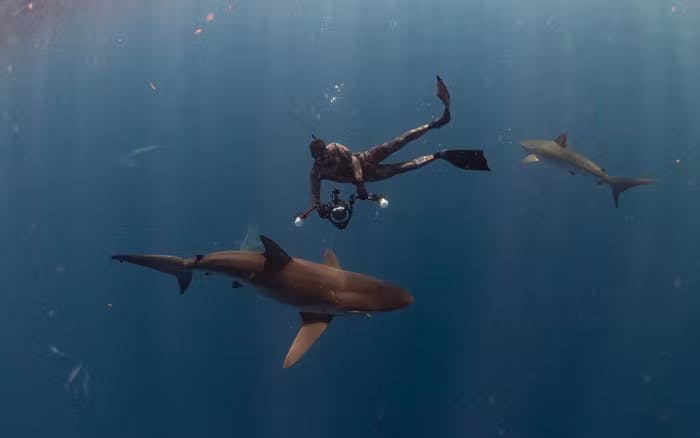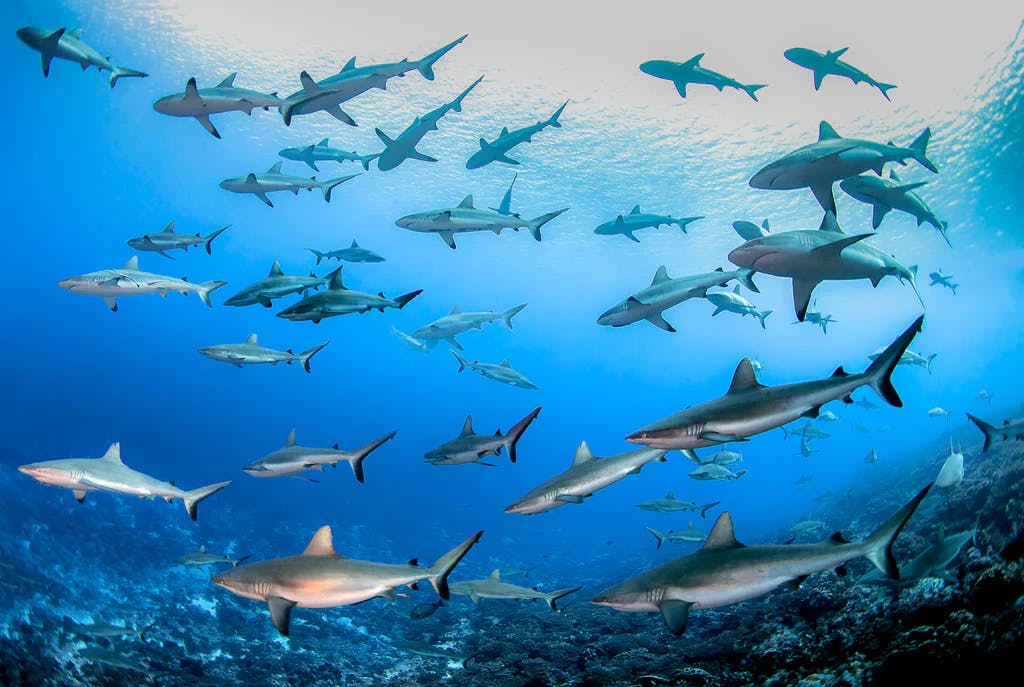What is the largest shark species?
The Whale Shark is the largest fish in the ocean reaching lengths up to 42ft long, but they are absolutely harmless. Whale Sharks are filter feeders, meaning they only eat planktonic organisms and small fish.
How long do sharks live for?
Most sharks live on average 20-30 years, however there are some that live much longer. Whale Sharks for example are thought to live over 100 years.
Are sharks endangered?
Unfortunately, yes. Studies suggest that in the past 50 years, the worldwide shark population has declined by over 70%. The biggest threats to sharks are overfishing for their fins to make shark fin soup, and accidental catches from long line, or gill net fishing.
Why are there so many shark teeth?
Unlike humans, sharks have the ability to regenerate their teeth. Over their lifetime, a shark will lose at least 30,000 teeth, and then another will just take its place. This is why we can find so many shark teeth.
Are sharks dangerous?
Most sharks are not dangerous to humans. Of the hundreds of species of sharks, only about a dozen have been involved in attacks against humans. Humans are not part of a shark's diet, which is why in many cases a shark attack is just a taste. It is still very important to always be wary of your surroundings, and to take sharks seriously. Even though they don’t want to kill you, they very easily could.
How much does a shark dive cost?
Depending on the type of diving and length of the trip the price can vary from $100 to well over $5,000. You can take a day trip in Jupiter, Florida for $195 or take a 5 day trip to Guadalupe Island, Mexico for $3595.
Do you need to be a certified diver to dive with sharks?
Overall, no. There are a variety of different dive charters and techniques that they use. Some charters will allow you to snorkel and freedive, while some will utilize surface cages and hookah systems to pump air into your regulator. Here at Divers Direct, you are required to possess a certification to purchase and operate a hookah system. There are many shark charters that will require you to be certified. So make sure to do your research before booking.
What to bring when shark diving?
Most cage diving charters will provide you with all the gear you need. Some will only require you to bring a mask and snorkel. However, when going on shorter day trips, you will most likely be required to bring all your typical diving gear. Gear up as you normally would for the depth and type of dive you are doing. Just try to avoid wearing anything shiny.


